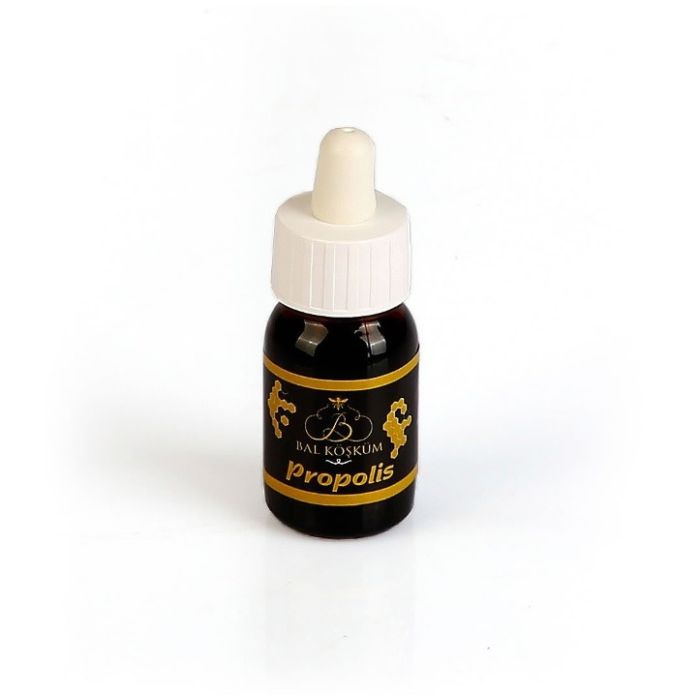Bal Köşküm, Propolis Extract 50% 50 CC.
Most of the plants protect their leaves, flowers and fruits with resinous materials that they produce against antimicrobial rot, which have waterproof and thermal insulation properties. Honey bees collect these resinous substances from cracks, buds and leaves in the trunks of trees. The sticky substance that bees mix with beeswax by chewing, adding oral digestive enzymes and partially digesting it is used in the hive for various purposes. In other words, propolis honey bees; It is a sticky, dark-colored substance that it collects from living plants, mixes it with beeswax and uses it to polish and close the openings inside the hive before the eggs are laid in the larvae eyes. Inorganic substances contained in propolis; Sodium (Na), Potassium (K), Magnesium (Mg), Calcium (Ca), Barium (Ba), Boron (Bo) (trace), Strontium (Sr), Zinc (Zn), Cadmium (Cd), Aluminum ( Al), Silicon (Si), Selenium (Se) (trace), Iron (Fe), Nickel (Ni), Chromium (Cr), Manganese (Mn), Titanium (Ti), Silver (Ag), Cobalt (Co) It is in the form of vanadium (V). The antibacterial, antifungal, antiviral, anti-inflammatory, local anesthetic, antioxidant, liver protective, immunomodulatory and cytotoxic activities of propolis ethanol extract have been proven. There is also evidence that some components of propolis have cellular poison and chemical protection effects. The best known of these components are Artepillin C, clerodan diterpenoids and benzofurans. Propolis, which contains caffeic acid phenyl ester (CAPE), can cause cell growth to stop and die. Propolis components showed a high cellular toxic effect in cancerous tissue, but did not show an effect on healthy tissue. Studies on animals have shown that CAPE, artepillin C and diterpenoid from cleros are protected from breast, skin, kidney and colon cancer.



